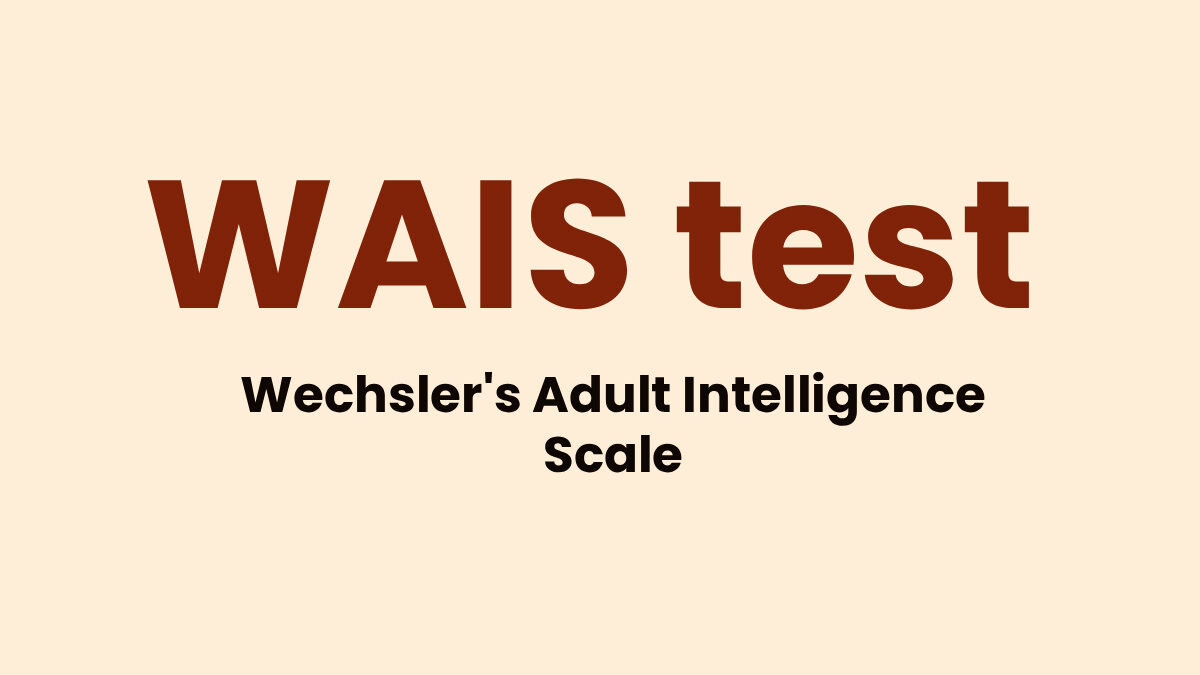Table of Contents
Definition WAIS test
The WAIS is a test built to assess global intelligence, understood as the concept of IQ, of individuals between 15 and 64 years old, of any race, intellectual level, education, socioeconomic and cultural origins, and reading level. It is individual and consists of 2 scales: verbal and performance.
What does the WAIS Intelligence Test or Wechsler Scale?
The WAIS test, which stands for Wechsler’s Adult Intelligence Scale is a standardized test used to measure the intelligence quotient of adults. The intelligence quotient is a score obtained by performing specific cognitive tests. And which is evaluated based on the person’s chronological age and the expected results of the test according to their age group. The WAIS test is the most widely used intelligence test at present. And it also has a version to measure intelligence in children: the WISC, the Wechsler Scales of Intelligence for Children.
This test rests based on Wechsler’s definition of intelligence, considering it a global capacity that allows us to act and manage our environment effectively. As well as think and act rationally. Wechsler considered that although this ability was somewhat general. It could get subdivided into different categories that we can through various tests.
Also read: What are Tags? – Definition, Examples, Benefits, And More
History of the WAIS test
At the beginning of the 20th century, the psychologist Alfred Binet, interested in helping children with special educational needs, developed a scale known as the Binet Scale in which he measured the abilities of these children. After his death, although not proposed Binet, his Scale is in use and called as Stanford-Binet Scale, taken as a measure of the inherited abilities of individuals, to measuring intelligence as a unitary factor without considering the contextual conditions of individuals or their different capacities. Binet, however, considered intelligence as something complicated to measure, and that could not get reduced to just one number.
Thus, the American psychologist David Wechsler, who also did not conceive of intelligence as something reduced to a single factor. Published the Wechsler Adult Intelligence Scale (WAIS) for the first time in 1955. A test with which he intended to measure the intelligence of adults and young people based on different cognitive capacities. And which had begun as a refined revision of the Scale that Wechsler had been creating since the 1930s, the Wechsler-Bellevue Scale.
Since 1955 many have been the changes and new versions introduced in the WAIS test that even today are still commonly used. Thus, the version currently used is WAIS-IV, which presents new subtests and appropriate changes to the current information.
Wechsler’s ideas have influenced later authors such as Howard Gardner, who developed his Theory of Multiple Intelligences in the 1980s.
What exactly does the Wechsler Adult Intelligence Scale measure?
The WAIS measures the different capacities that people present in different areas, both high and low, trying to find the strengths. As well as the specific needs that a person may present.
WAIS also provides an overall score, but it does so by comparing people’s scores with their age group. Thus, figure 100 indicates the average of the intelligence scores of the general population that usually range between 85 and 115.
Although WAIS provides a general result, this is an average of the different factors.
Verbal comprehension
These tests seek to evaluate semantic knowledge. As well as expression, verbal comprehension, and abstract verbal reasoning, done through tests. Such as word definition, general knowledge tests, or word comparison.
Perceptual reasoning
By measuring this factor, they attempted to evaluate the person’s ability to solve abstract non-verbal problems using inductive reasoning. As well as perceive visual details and visual and spatial processing.
Working memory
Through tests to evaluate working memory, attempts to inquire into the capacity of the evaluated person to manipulate mentally. Reason quantitatively or concentrate, remembering letters and numbers or arithmetic tests.
Processing speed
Measures the factors like symbol search, Encoding, speed to process information, associative memory, and graphomotor speed.
Criticism of WAIS intelligence tests
Although the WAIS test is indeed the right way of approaching the cognitive strengths and weaknesses of a person. It is also true that this type of test, In general, also has some criticism.
One of the biggest criticisms of the tests used to assess intelligence is that sometimes they are not accurate predictors of the results and successes that a person can achieve in life. The tests usually measure abilities such as abstract or verbal reasoning at a specific moment in our lives. Still, many investigations have affirmed that the figure that we obtain as an intelligence quotient can vary over the years according to the living conditions of the individuals. When a person receives a specific type of education, his IQ can increase or decrease depending on his familiarity with this type of test and these environmental factors.
Also read: What is TCP? – Definition, History, Functions, And More

